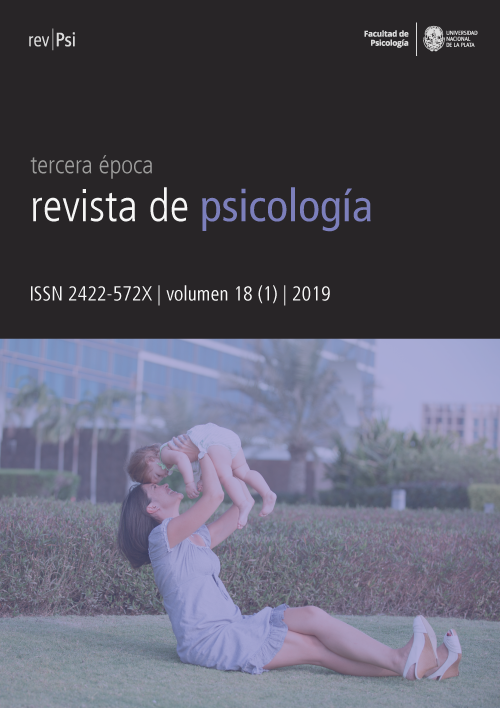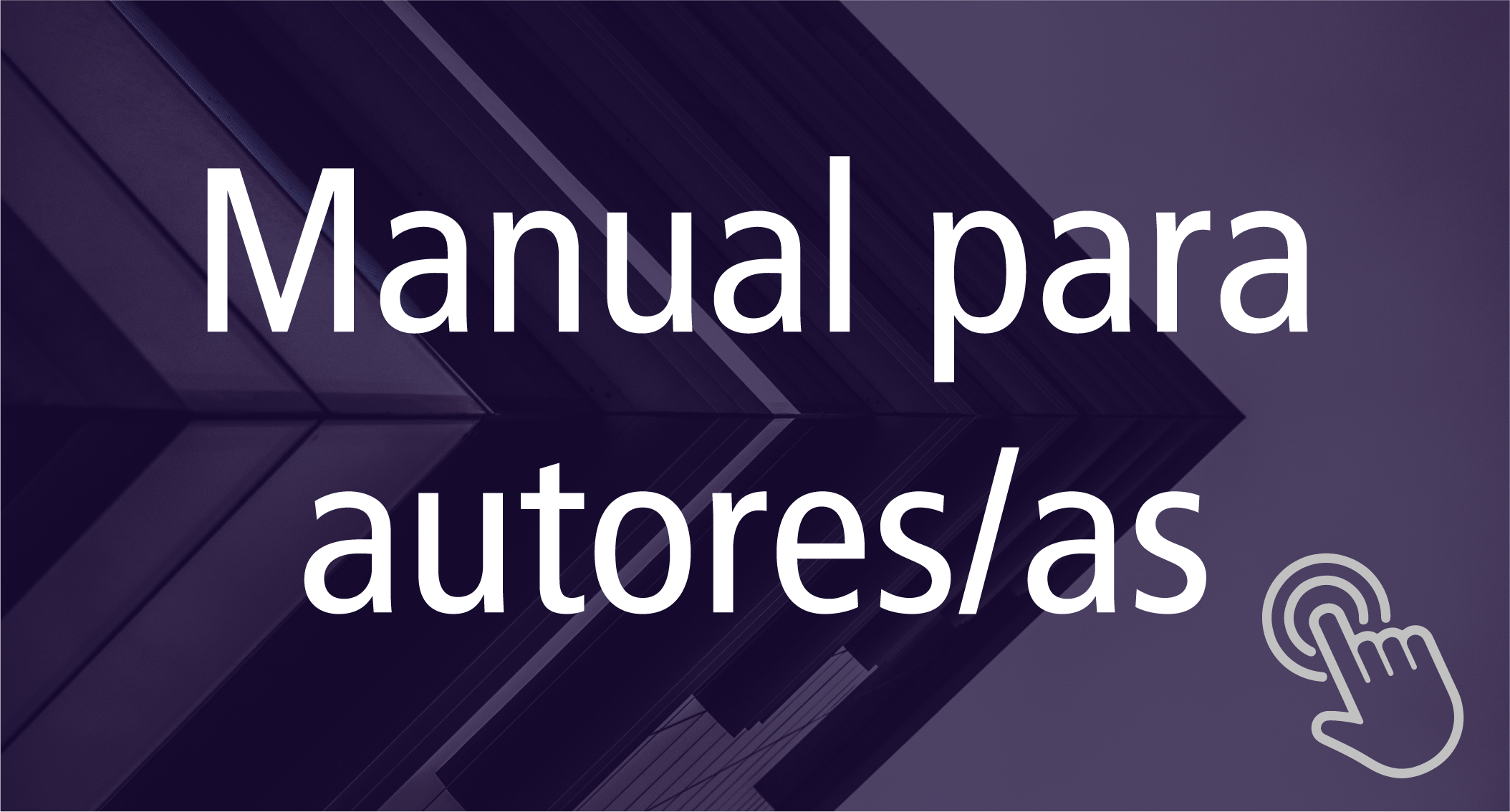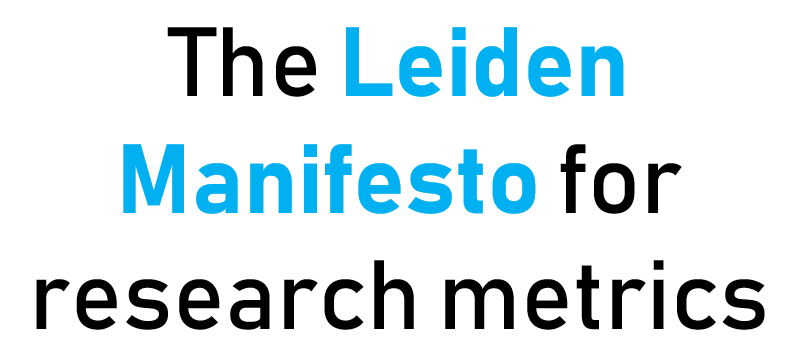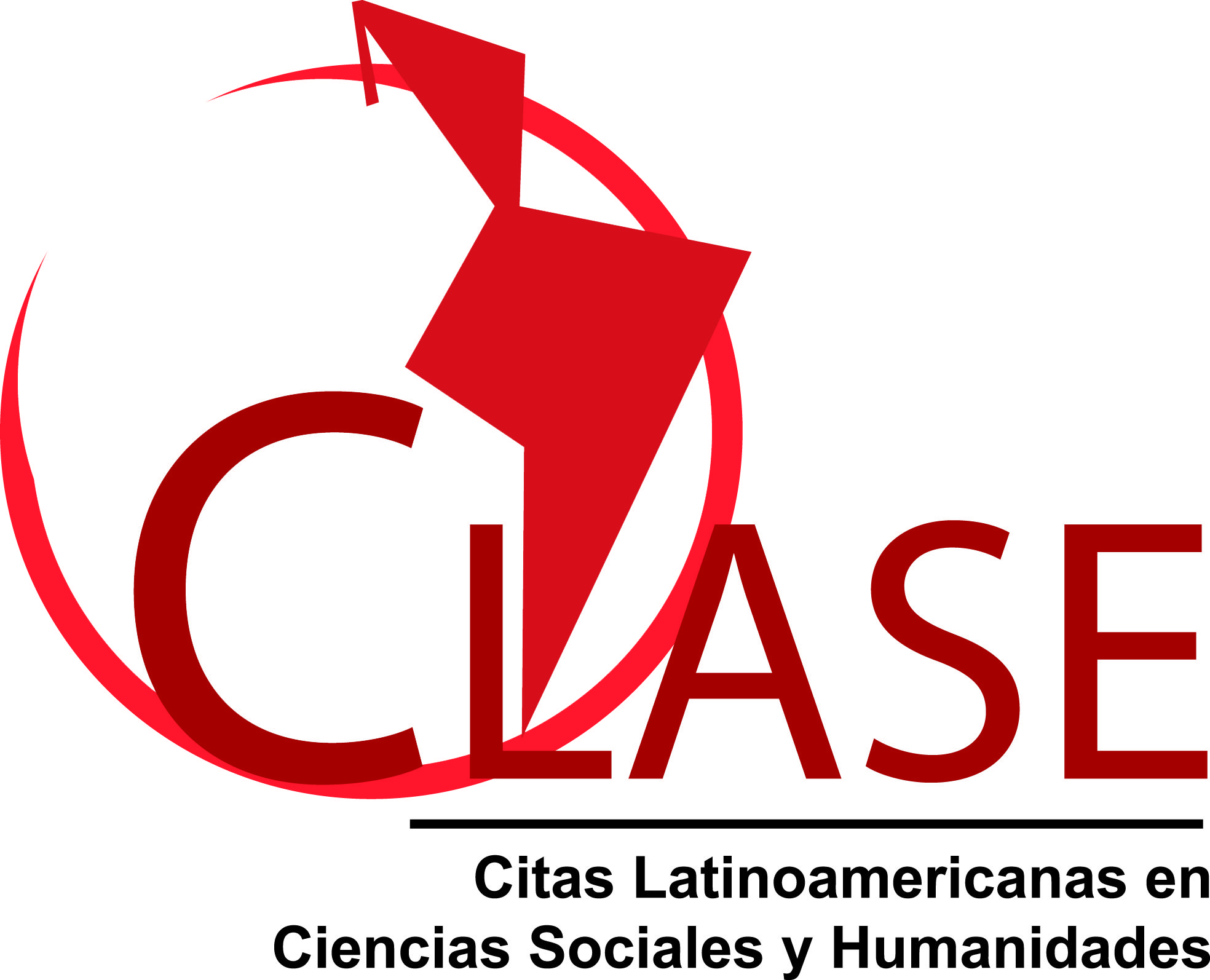The study of mental attribution from the second-person standpoint: A methodological review
DOI:
https://doi.org/10.24215/2422572Xe026Keywords:
second-person perspective, social cognition, methodology, interactionAbstract
We present a methodological review of publications that report empirical research on early interactive involvement conducted from a second person perspective. The selected publications were analyzed methodologically, highlighting points of convergence and divergence between them. Highlights of the second person methodology for the study of social cognition in early social interactions are pointed out. Likewise, we indicate some questions to this methodology that could contribute with this proposal.
Downloads
Metrics
References
Alessandroni, N., Vietri, M. y Krasutzky, I. (2017). La atribución de estados mentales y el autismo: Modelos teóricos y controversias psicopatológicas contemporáneas. En M. C. Piro (Ed.), El autismo. Perspectivas teórico-clínicas y desafíos contemporáneos (pp. 103-150). La Plata: EDULP - Editorial de la Universidad Nacional de La Plata.
American Psychological Association. (2010). Publication manual of the American Psychological Association. Washington: American Psychological Association.
Baron-Cohen, S. (1995). Mindblindness: An essay on autism and theory of mind. Cambridge: MIT press.
Bordoni, M. (2014). El establecimiento de coincidencias en las interacciones adulto-bebé. Un estudio longitudinal cuasi-experimental sobre imitación y entonamiento afectivo (tésis doctoral inédita). Facultad de Psicología, Universidad Nacional de Córdoba, Argentina.
Bordoni, M., Español, S. y De Grande, P. (2016). La incidencia del entonamiento afectivo y la imitación en el involucramiento visual-social temprano. Avances en Psicología Latinoamericana, 34(3), 487-503. https://doi.org/10.12804/apl34.3.2016.04
Dawson, G., Hill, D., Spencer, A., Galpert, L. y Watson, L. (1990). Affective exchanges between young autistic children and their mothers. Journal of Abnormal Child Psychology, 18(3), 335-345. https://doi.org/10.1007/BF00916569
De Jaegher, H., Di Paolo, E. y Gallagher, S. (2010). Can social interaction constitute social cognition? Trends in Cognitive Sciences, 14(10), 441-447. https://doi.org/10.1016/j.tics.2010.06.009
Fantasia, V., Fasulo, A., Costall, A. y López, B. (2014). Changing the game: Exploring infants’ participation in early play routines. Frontiers in Psychology, 5. https://doi.org/10.3389/fpsyg.2014.00522
Fantasia, V., Markova, G., Fasulo, A., Costall, A. y Reddy, V. (2016). Not just being lifted: Infants are sensitive to delay during a pick-up routine. Frontiers in Psychology, 6. https://doi.org/10.3389/fpsyg.2015.02065
Gallese, V. (2014). Bodily selves in relation: Embodied simulation as second-person perspective on intersubjectivity. Philosophical Transactions of the Royal Society B: Biological Sciences, 369(1644), 20130177-20130177. https://doi.org/10.1098/rstb.2013.0177
García-Pérez, R., Lee, A. y Hobson, P. R. (2007). On intersubjective engagement in autism: A controlled study of nonverbal aspects of conversation. Journal of Autism and Developmental Disorders, 37(7), 1310–1322. https://doi.org/10.1007/s10803-006-0276-x
Goldman, A. I. (1989). Interpretation psychologized. Mind & Language, 4(3), 161-185. https://doi.org/10.1111/j.1468-0017.1989.tb00249.x
Gomila, A. (2001). La perspectiva de segunda persona: Mecanismos mentales de la intersubjetividad. Contrastes. Revista Internacional de Filosofía, 10, 65-86. https://doi.org/10.24310/Contrastescontrastes.v0i0.1448
Gomila, A. (2002). La perspectiva de segunda persona de la atribución mental. Azafea, 4, 123-138.
Gomila, A. (2008). La relevancia moral de la perspectiva de segunda persona. En D. Pérez y L. Fernández (Eds.), Cuestiones filosóficas: Ensayos en honor de Eduardo Rabossi (pp. 493-510). Buenos Aires: Catálogos.
Gopnik, A. y Wellman, H. (2002). La teoría de la teoría. En Cartografía de la mente (pp. 13-63). Barcelona: Gedisa.
Gordon, R. M. (1986). Folk psychology as simulation. Mind & Language, 1(2), 158-171. https://doi.org/10.1111/j.1468-0017.1986.tb00324.x
Harris, P. L. (1992). From simulation to folk psychology: The case for development. Mind & Language, 7(1-2), 120-144. https://doi.org/10.1111/j.1468-0017.1992.tb00201.x
Hobson, P. (2004). The cradle of thought: Exploring the origins of thinking. Londres: Pan Macmillan.
Hobson, R. P. (1990). On acquiring knowledge about people and the capacity to pretend: Response to Leslie (1987). Psychological Review, 97(1), 114-121. https://doi.org/10.1037/0033-295X.97.1.114
Hobson, R. P. y Lee, A. (1998). Hello and goodbye: A study of social engagement in autism. Journal of Autism and Developmental Disorders, 28(2), 117-127. https://doi.org/10.1023/A:1026088531558
Mojzisch, A., Schilbach, L., Helmert, J. R., Pannasch, S., Velichkovsky, B. M. y Vogeley, K. (2006). The effects of self-involvement on attention, arousal, and facial expression during social interaction with virtual others: A psychophysiological study. Social Neuroscience, 1(3-4), 184-195. https://doi.org/10.1080/17470910600985621
Newton, P., Reddy, V. y Bull, R. (2000). Children’s everyday deception and performance on false-belief tasks. British Journal of Developmental Psychology, 18, 297–317. https://doi.org/10.1348/026151000165706
Pérez, D. (2013). Sentir, desear, creer. Una aproximación filosófica a los conceptos psicológicos. Buenos Aires: Prometeo.
Reddy, V. y Trevarthen, C. (2004). What we learn about babies from engaging their emotions. Zero to Three, 24(3), 9-15.
Reddy, V. (2000). Coyness in early infancy. Developmental Science, 3(2), 186-192. https://doi.org/10.1111/1467-7687.00112
Reddy, V. (2001). Infant clowns: The interpersonal creation of humour in infancy. Enfance, 53(3), 247-253. https://doi.org/10.3917/enf.533.0247
Reddy, V. (2008). How infants know minds. Cambridge: Harvard University Press.
Reddy, V. (2012). A gaze at grips with me. En A. Seeman (Ed.), Joint attention. Cambridge: MIT Press.
Reddy, V., Markova, G. y Wallot, S. (2013). Anticipatory adjustments to being picked up in infancy. PLoS ONE, 8(6), e65289. https://doi.org/10.1371/journal.pone.0065289
Reddy, V. y Morris, P. (2004). Participants don’t need theories: Knowing minds in engagement. Theory & Psychology, 14(5), 647-665. https://doi.org/10.1177/0959354304046177
Reddy, V. y Uithol, S. (2016). Engagement: Looking beyond the mirror to understand action understanding. British Journal of Developmental Psychology, 34(1), 101-114. https://doi.org/10.1111/bjdp.12106
Reddy, V., Williams, E. y Vaughan, A. (2002). Sharing humour and laughter in autism and Down’s syndrome. British Journal of Psychology, 93, 219-242. https://doi.org/10.1348/000712602162553
Schilbach, L., Eickhoff, S. B., Cieslik, E. C., Kuzmanovic, B. y Vogeley, K. (2012). Shall we do this together? Social gaze influences action control in a comparison group, but not in individuals with high-functioning autism. Autism, 16(2), 151– 162. https://doi.org/10.1177/1362361311409258
Schilbach, L., Eickhoff, S. B., Cieslik, E. C., Shah, N. J., Fink, G. R. y Vogeley, K. (2010). Eyes on me: An fMRI study of the effects of social gaze on action control. Scan, 6(4), 393-403. https://doi.org/10.1093/scan/nsq067
Schilbach, L., Eickhoff, S. B., Mojzisch, A. y Vogeley, K. (2008). What’s in a smile? Neural correlates of facial embodiment during social interaction. Social Neuroscience, 3(1), 37-50. https://doi.org/10.1080/17470910701563228
Schilbach, L., Wilms, M., Eickhoff, S. B., Romanzetti, S., Tepest, R., Bente, G., … Vogeley, K. (2010). Minds made for sharing: Initiating joint attention recruits reward-related neurocircuitry. Journal of Cognitive Neuroscience, 22(12), 2702–2715. https://doi.org/10.1162/jocn.2009.21401
Schilbach, L., Wohlschlaeger, A. M., Kraemer, N. C., Newen, A., Saha, N. J., Fink, G. R. y Vogeley, K. (2006). Being with virtual others: Neural correlates of social interaction. Neuropsychologia, 44(5), 718–730. https://doi.org/10.1016/j.neuropsychologia.2005.07.017
Urrútia, G. y Bonfill, X. (2010). Declaración PRISMA: Una propuesta para mejorar la publicación de revisiones sistemáticas y metaanálisis. Medicina Clínica, 135(11), 507-511. https://doi.org/10.1016/j.medcli.2010.01.015
Vietri, M., Alessandroni, N. y Piro, M. C. (en prensa). La perspectiva de segunda persona de la atribución de estados mentales: Una revisión sistemática de su estado actual de desarrollo. Psykhe.
Wimmer, H. y Perner, J. (1983). Beliefs about beliefs: Representation and constraining function of wrong beliefs in young children’s understanding of deception. Cognition, 13(1), 103-128. https://doi.org/10.1016/0010-0277(83)90004-5
Ynoub, R. C. (2000). Cuestión de método: Aportes para una metodología crítica. México, D.F.: CENGAGE Learning.
Downloads
Published
How to Cite
Issue
Section
License
![]()
Authors who publish in this journal accept the following conditions:
- Authors retain the copyright and assign the right of first publication to the journal, with the work registered under a Creative Commons attribution license (CC-BY), which allows third parties to use what is published whenever they mention the authorship of the work and the first publication in this magazine.
- Authors can make other independent and additional contractual agreements for the non-exclusive distribution of the article published in this journal (e.g., include it in an institutional repository or publish it in a book) as long as they clearly indicate that the work was published for the first time in this magazine.
- Authors are allowed and encouraged to publish their work on the Internet (e.g., on institutional or personal webpages) before and during the review and publication process, as it can lead to productive exchanges and greater and faster dissemination of published work (see The Effect of Open Access ).





































